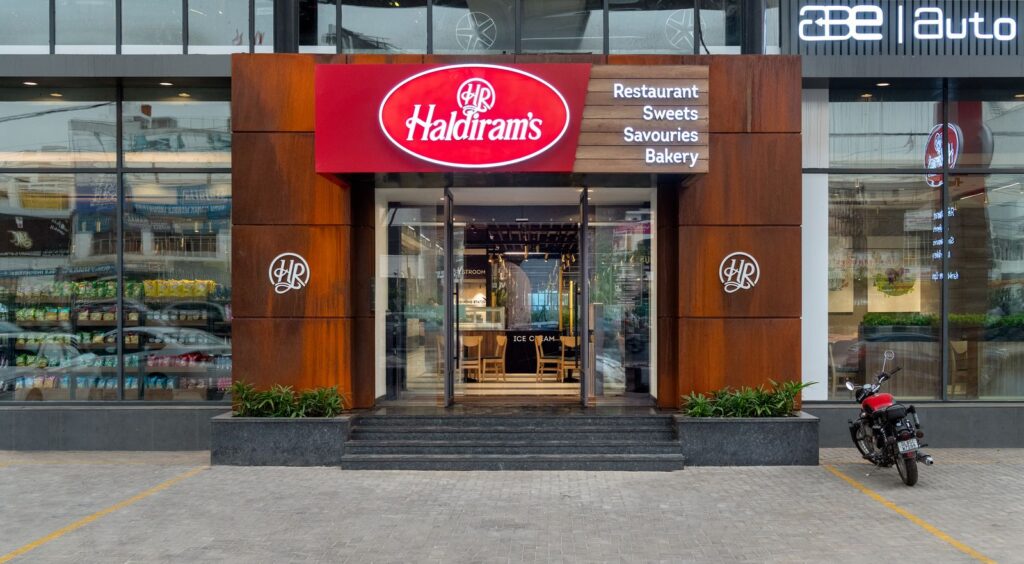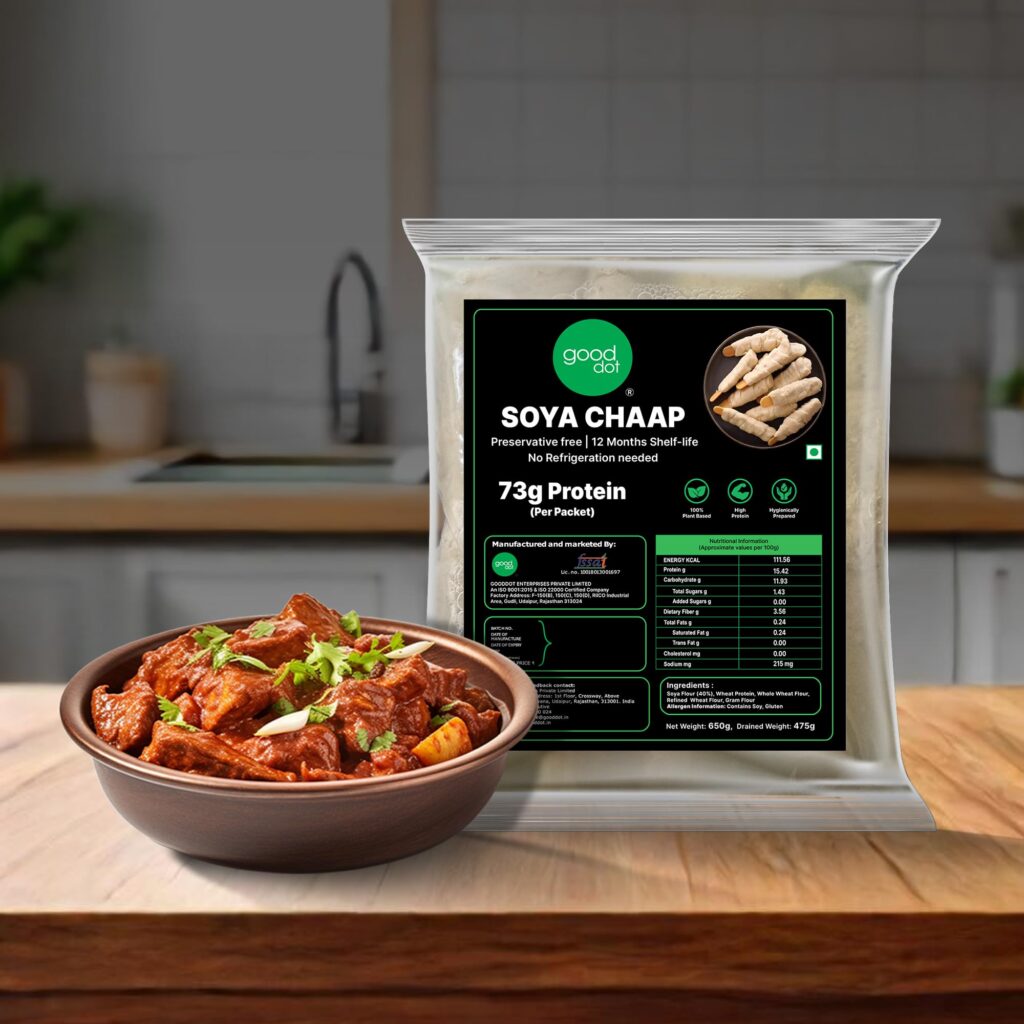
Haldiram’s, one of India’s largest food companies, has teamed up with plant protein player GoodDot to put its soy-based meat alternative on its menu.
One of India’s most popular restaurant chains is embracing plant proteins, opening up access to tens of millions of vegetarian customers.
Haldiram’s, which has been around since 1937, has partnered with Udaipur-based GoodDot to add its soya chaap – a staple soy-based meat alternative in India – to its menu.
The meat-free product will feature in Haldiram’s tandoori platter at all its stores in the national capital region, which encompasses the cities of Delhi, Gurgaon, Noida, Faridabad, Ghaziabad, and more.
Haldiram’s bet on plant-based is a big deal

Founded in 2016, GoodDot is one of India’s earliest and most well-established plant-based meat players, with a product range spanning mutton-style bites, chicken-like chunks, BBQ tikkas, biryani, and even an egg-free scramble.
Its shelf-stable soya chaap is made from soybean flour, wheat protein, whole wheat and refined wheat flours, and gram flour. It contains 15.4g of protein and 3.5g of fibre per 100g, with zero cholesterol and only 0.2g of fat.
The ready-to-use product can be used in a variety of recipes, from curries and kebabs to stir-fries and salads, and caters to Indians looking for clean-label, additive-free protein options.
Having raised $7M in funding to date, GoodDot has expanded its offerings to international markets too, including the US, Canada, Australia, Singapore, and the UAE (among others). It also operates a spin-off foodservice business, GoodDo, with 15 locations across Mumbai and Udaipur.
Haldiram’s, meanwhile, began as a CPG company making confectionery and snacks, before expanding into a fully vegetarian restaurant chain that has become a household name among Indians both at home and abroad. Last year, its revenues surpassed $1.5B.
The food giant exports to 80 countries, including Singapore, whose state-owned investor Temasek took a 10% stake in the business earlier this year. The deal valued Haldiram’s at $10B.
“Soya chaap is one of the most crowded and competitive categories in India’s food space. Everyone sells it, from small stalls to big restaurants,” said GoodDot co-founder and CEO Abhishek Sinha. “And yet, when the country’s food giant […] chose GoodDot Soya Chaap, we are beyond thrilled.”

Local dishes and affordability can win over consumers
Research shows that low awareness and common misconceptions about plant-based meat have led to a lack of demand in restaurants, but chefs, restaurateurs and industry leaders suggest that these products need to be integrated into local cuisines to help position them as tasty and indulgent offerings on foodservice menus.
This year, 37% of Indians said they were looking to add more plant-based proteins to their diets. And despite only 11% having given plant-based meat a go, more Indians want to increase their intake of these products (43%) than conventional meat (36%). In fact, two in five want to reduce the amount of meat they eat.
Protein content and health are the most influential drivers of plant-based food consumption in the country- however, affordability is among the biggest barriers. Haldiram’s is known for its accessible prices and local cuisine, so GoodDot’s partnership with the chain fits right into these trends.
It’s not the only major restaurant chain that is betting on meat-free protein in India. In July, McDonald’s announced the launch of its Protein Plus range, which adds 5g of soy, pea, and whey protein per ₹25 ($0.29) slice to any burger. It’s available in all of its outlets in West and South India.
Meanwhile, plant proteins have also received a boost from the government. In the upcoming reform of its Goods and Services Tax, plant-based milk and texturised vegetable proteins (a common ingredient in meat analogues) will see their tax rate reduced from 12-18% to 5%, on par with milk beverages, butter, ghee, cheese, and sausages.
The post Iconic Indian Fast-Food Chain Haldiram’s Adds Plant-Based Meat to Menu appeared first on Green Queen.
This post was originally published on Green Queen.